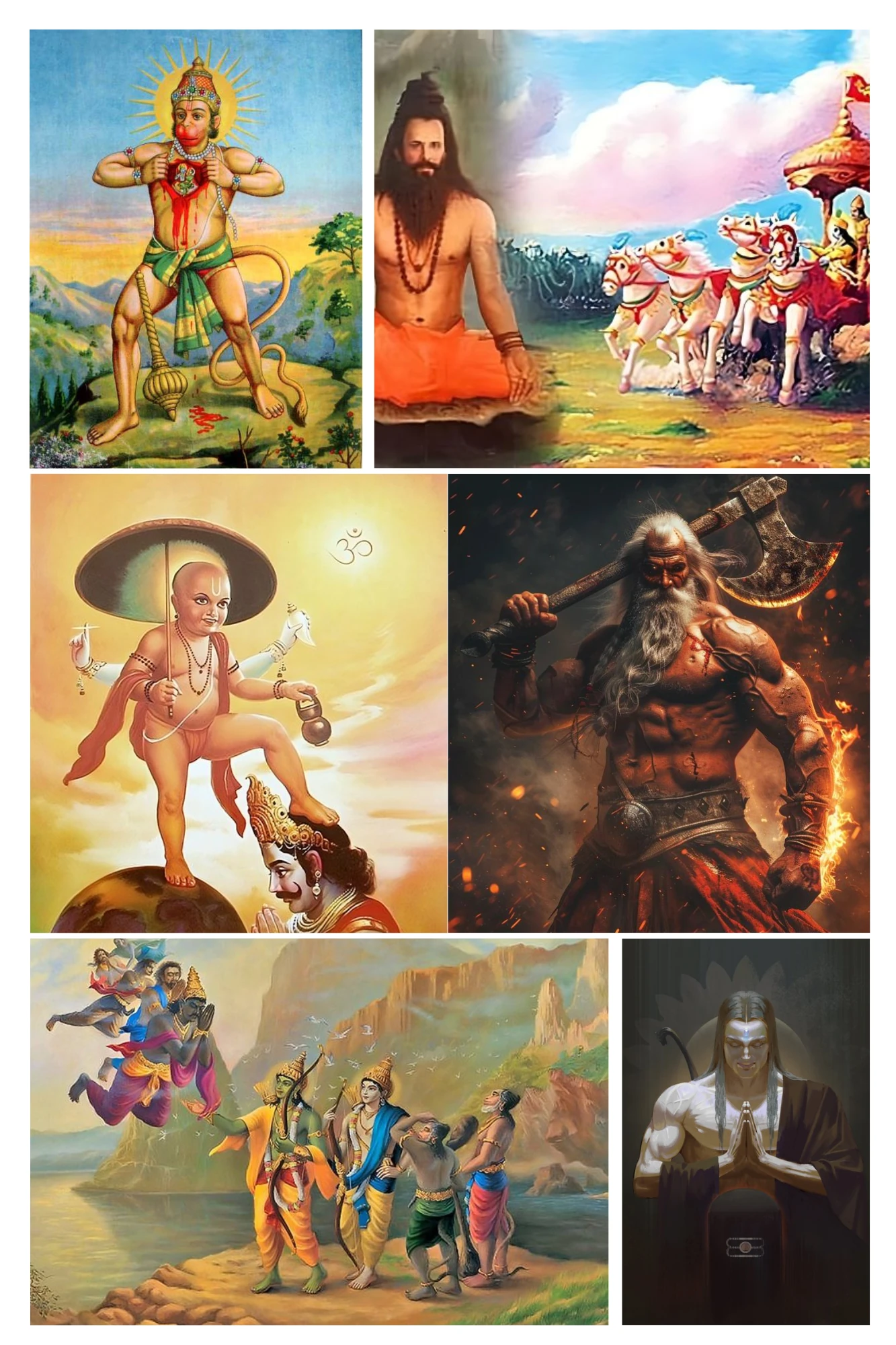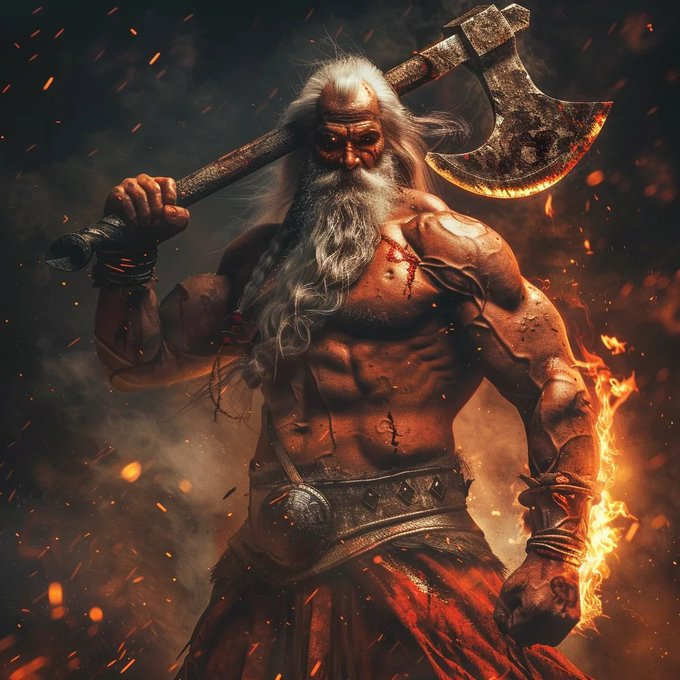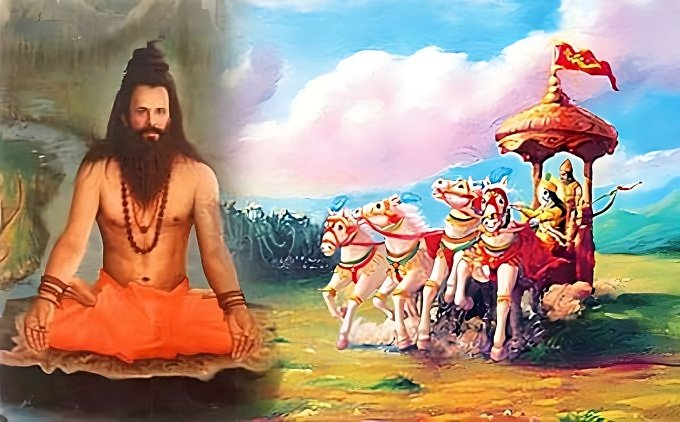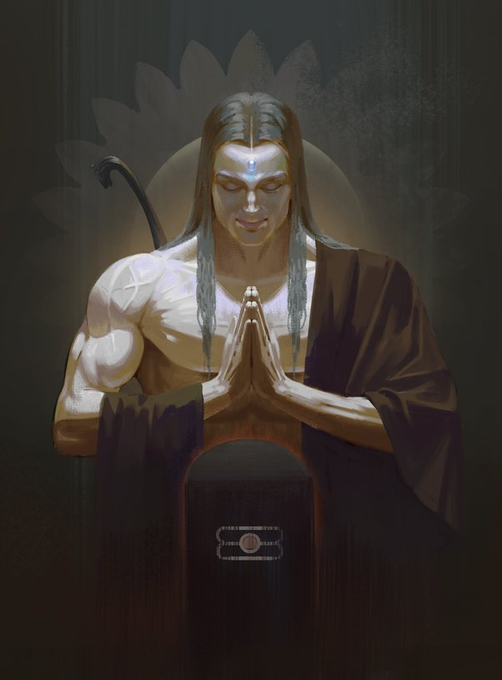There are 8 Chiranjeevi (immortal living beings in Hinduism who are to remain alive on Earth until the end of the current Kali Yuga) currently active on Earth
Hanuman Ji
 Hanuman ji (/ˈhʌnʊˌmɑːn/; Sanskrit: हनुमान्, IAST: Hanumān), also known as Maruti, Bajrangabali, and Anjaneya, is a deity in Hinduism, revered as a divine vanara, and a devoted sevak of Sri Rama. Central to the Ramayana, Hanuman ji is celebrated for his unwavering devotion to Rama and is considered one of the Chiranjivis. He is traditionally believed to be the spiritual offspring of the wind deity Vayu, who is said to have played a significant role in his birth. In Shaiva tradition, he is regarded to be an incarnation of Shiv ji, while in most of the Vaishnava traditions he is the son and incarnation of Vayu. His tales are recounted not only in the Ramayana but also in the Mahabharata and various Puranas.
Hanuman ji (/ˈhʌnʊˌmɑːn/; Sanskrit: हनुमान्, IAST: Hanumān), also known as Maruti, Bajrangabali, and Anjaneya, is a deity in Hinduism, revered as a divine vanara, and a devoted sevak of Sri Rama. Central to the Ramayana, Hanuman ji is celebrated for his unwavering devotion to Rama and is considered one of the Chiranjivis. He is traditionally believed to be the spiritual offspring of the wind deity Vayu, who is said to have played a significant role in his birth. In Shaiva tradition, he is regarded to be an incarnation of Shiv ji, while in most of the Vaishnava traditions he is the son and incarnation of Vayu. His tales are recounted not only in the Ramayana but also in the Mahabharata and various Puranas.
He epitomizes the fusion of “strength, heroic initiative, and assertive excellence” with “loving, emotional devotion” to his lord Rama, embodying both Shakti and Bhakti. Subsequent literature has occasionally depicted him as the patron deity of martial arts, meditation, and scholarly pursuits. He is revered as an exemplar of self-control, faith, and commitment to a cause, transcending his outward Vanara appearance. Traditionally, Hanuman is celebrated as a lifelong celibate, embodying the virtues of chastity.
Hanuman ji combines two of the most cherished traits in the Hindu bhakti-shakti worship traditions: “heroic, strong, assertive excellence” and “loving, emotional devotion to personal God”.
Bhagwan Parashuram
Parashurama (Sanskrit: परशुराम, romanized: Paraśurāma, lit. ’Rama with an axe’), also referred to as Rama Jamadagnya, Rama Bhargava and Virarama, is the sixth avatar among the Dashavatara of the preserver god Vishnu in Hinduism. He is believed to be one of the Chiranjivis (Immortals), who will appear at the end of the Kali Yuga to be the guru of Vishnu’s tenth and last incarnation, Kalki.
Born to Jamadagni and Renuka, the Brahmin Parashurama was foretold to appear at a time when overwhelming evil prevailed on the earth. The Kshatriya class, with weapons and power, had begun to abuse their power, take what belonged to others by force and tyrannize people. He corrected the cosmic equilibrium by destroying the Kshatriya warriors twenty-one times.
There are legends dealing with the origins of the western coast of India geographically and culturally. One such legend is the retrieval of the west coast from the sea, by Parashurama, a warrior sage. It proclaims that Parashurama, an incarnation of Maha Vishnu, threw his battle axe into the sea. As a result, the land of the western coast arose, and thus was reclaimed from the waters. The south western state of Kerala in India is also called Parashurama kshetram (Land of Parashurama).
He plays important roles in the Ramayana and Mahabharata. In the Ramayana, he appears right after the wedding of Sita mata with Sri Ram and challenges Sri Ram to a fight for having broken Lord Shiva’s bow. In the Mahabharata, he serves as mentor to Bhishma (chapter 5.178), Drona (chapter 1.121) and Karna (chapter 3.286), teaching weapon arts and helping key warriors in both sides of the war.
Parashurama is said to have retired in the Mahendra Parvata (mountains), according to chapter 2.3.47 of the Bhagavata Purana. He is the only incarnation of Maha Vishnu who never dies, never returns to abstract Vishnu and lives in meditative retirement. Further, he is the only incarnation of Maha Vishnu that co-exists with other Vishnu incarnations of Sri Rama and Sri Krishna, respectively.
Maharishi Markandeya
Markandeya (Sanskrit: मार्कण्डेय, romanized: Mārkaṇḍeya) is a rishi (sage) featured in Hindu literature. He is the son of the sage Mrikanda and his wife, Manasvini.[1] The Markandeya Purana (one of the eighteen Mahāpurāṇas in Hinduism), attributed to the sage, comprises a dialogue between Markandeya and a sage called Jaimini. A number of chapters in the Bhagavata Purana are dedicated to his conversations and prayers.[2] He is also mentioned in the Mahabharata. Markandeya is venerated within all mainstream Hindu traditions.
There is a story of how Shiv ji protected Markandeya from the clutches of death, personified as Yama. Sage Mrikanda performed penance to propitiate Shiva for several years and sought from him the boon of begetting a son. The deity offered him the choice of either a virtuous and pious son who would have a short life, or a dull-witted or malicious child who would have a long life. Mrikanda chose the former, and was blessed with Markandeya, an exemplary son, destined to die at the age of sixteen. Markandeya mastered the Vedas and the Shastras and grew up to be a great devotee of Shiva. Learning his fate from his distressed parents shortly before his sixteenth year, he started to engage in severe austerities. On the day of his destined death, he continued his worship of Shiva in the deity’s aniconic form of a lingam. The messengers of Yama, the god of death, were unable to take away his life because the power of his devotion to Shiva shielded him against them. Yama came in person to take away Markandeya’s life, even as the sage embraced the lingam, crying for help. Yama sprung his noose around the young sage’s neck, which also circled the lingam. Angered, Shiva emerged from the lingam, attacking Yama to save his devotee. After slaying Yama, Shiva revived him under the request of the devas, under the condition that Markandeya remain sixteen years old forever.
Vision of Pralaya: The Bhagavata Purana describes Markandeya worshipping Vishnu for six manvanataras (an age of Manu). Alarmed by the sage’s prowess, Indra tasked a number of apsaras, gandharvas, and the god of love, Kamadeva, to disrupt his ascetic practice. The celestial beings travelled to the hermitage of the sage, located on the Himalayas along the banks of the river Pushpabhadra. The sage remained undisturbed by the songs, dances, and attempts of seduction by the beings, after which they fled. Impressed by Markandeya, Vishnu appeared before him in his form of the sage-brothers Nara-Narayana. Markandeya extolled the sage-brothers, and requested that he be granted a sight of Vishnu’s maya (illusion), which was granted. One evening, while Markandeya prayed, he experienced a vision of the pralaya, the dissolution of the universe. A great deluge submerged the earth, destroying all living beings, and the sage found himself being the only creature left alive, thrashed by the waters. Even as the torrent propelled him, the sage observed a banyan tree, upon whose branch he saw a dazzling baby upon a leaf. Markandeya marvelled at the sight of its wondrous form. Entering the form of the baby, he witnessed the entire universe, the passage of the ages, all living beings, as well as a vision of his own hermitage. Leaving the baby’s form and returning to the vision of the pralaya, the sage attempted to hug the baby, knowing it to be Vishnu himself. The baby vanished, and the maya was subsequently dispelled, returning Markandeya back to his hermitage. Even as Markandeya extolled Vishnu, Shiva and Parvati appeared before the sage, and the latter sang their praises. Pleased by the sage, Shiva offered him a boon. The sage asked for the devotees of Vishnu and Shiva to be blessed. Shiva granted this boon, declaring that Markandeya would also be immortal, gain great religious merit, and also blessed with the authorship of a Purana.
Vibhishan (brother of Ravana)
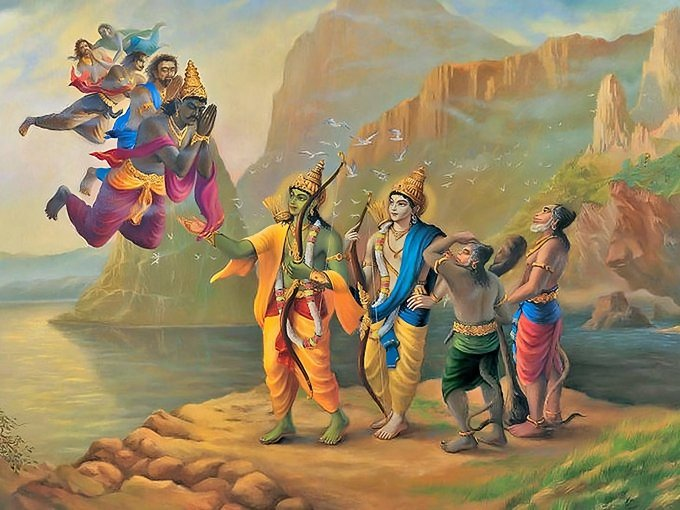
Vibhishana was the youngest son of the rakshasi Kaikesi and the sage Vishrava, who was himself a son of the sage Pulastya, one of the Prajapati. Vibhishana was the younger brother of the King of Lanka, Ravana, and also the sibling of Kumbhakarna. Even though he was born as a rakshasa, he was pious and considered himself a Brahmin, since his father was a sage.
Due to Vibhishana’s differences with Ravana, and because he was against the act of kidnapping Sita, he fled Lanka. His mother, Kaikesi, advised him to go and serve Rama, who was at that time assembling an army to defeat Ravana and to recover his wife. As a consequence, he divulged the secrets, of Ravana’s army and the secret of Ravana’s invulnerability, that made sure Rama was victorious in the great battle. Rama accepted Vibhishana’s fealty and anointed him the King of Lanka after Ravana’s death.
When Rama was about to leave Ayodhya at the end of his reign, he asked Vibhishana to stay on earth and serve the people and guide them to the path of truth and dharma.
Guru Kripacharya
He was the first teacher of Kauravas and Pandavas in the Mahabharata. In the Kurukshetra war, he fought on the side of the Kauravas. He was one of the few warriors who returned alive from the war. He was an honorable member of the royal court of Hastinapura.
Kripa and Kripi, the brother-sister twins of Brahmin parentage had been left in the forest. They were later looked after by Shantanu, king of Hastinapura.
Kripacharya was loyal to Duryodhana and functioned as one of the eleven commander-in-chief of the Kaurava army. He entered the war on all days and confronted all great warriors. At the end of the war, on the night of the 18th day, Kripacharya stood as guard as Ashwatthama slaughtered sleeping warriors on the side of Pandavas. He killed all those who tried to escape. This was the darkest deed of his life.
After the Mahabharat war, he was appointed to be the teacher and preceptor of the young prince Parikshit, the grandson of Arjuna, who was left in his care when Pandavas left for their final journey. Kripa is believed to be spending his days doing penance in the forest. Some believe he roams the earth and suffers for the sins he committed on the night of the 18th day of Kurukshetra war
Ashwatthama
Guru Dronacharya desired for a son who possessed the valor of Lord Shiva. To fulfill this wish, Drona undertook intense penance to please Lord Shiva. As a result of his devotion, a child was born to Dronacharya and Kripi, adorned with a gem on his forehead. This gem bestowed upon the child the power to shield himself from hunger, thirst, and fatigue.
However, amidst the chaos and carnage of war, tragedy struck with devastating consequences. Fueled by deception and treachery, Ashwatthama was led to believe that his beloved father, Drona, had been slain in battle. Consumed by grief and rage, he unleashed a torrent of destruction upon the Pandava camp, seeking vengeance for the loss of his father and the betrayal he had endured. Yet, in his quest for retribution, Ashwatthama crossed a line from which there could be no return. His actions, born of grief and fueled by fury, led to untold suffering and tragedy, forever staining his legacy with the blood of innocents. Instead of deviating his Astra (weapon) towards an uninhabited place, where this Astra can explode harmlessly, he directed it towards the womb of the pregnant Uttara (wife of Abhimanyu – the son of Arjuna) in an attempt to end the lineage of the Pandavas. The unborn child was
As a punishment, Ashwatthama was asked to surrender the gem on his forehead. Krishna then cursed Ashwatthama for 3000 years that he will roam in the forests with blood and puss oozing out of his injuries and cry for death. Since he had no fear of death during the war, death would not meet him. He will have neither any hospitality nor any accommodation; he will be in total isolation without any contact of physical communication from mankind and society. The wound caused by the removal of this gem on his forehead will not heal, and his body will suffer from a host of incurable diseases forming sores and ulcers that would never heal for 3000 years.
As he stood amidst the ruins of his own making, Ashwatthama grappled with the consequences of his actions, haunted by the ghosts of the past and the weight of his own guilt. In the aftermath of war, as the echoes of battle faded into silence and the smoke cleared from the battlefield, Ashwatthama stood as a symbol of the complexities of human nature. A figure of both admiration and revulsion, he embodied the eternal struggle between light and darkness, righteousness and temptation. His story serves as a cautionary tale, a reminder of the dangers of succumbing to the darkness within us and the devastating consequences that can arise from unchecked rage and vengeance.
Asura King Mahabali
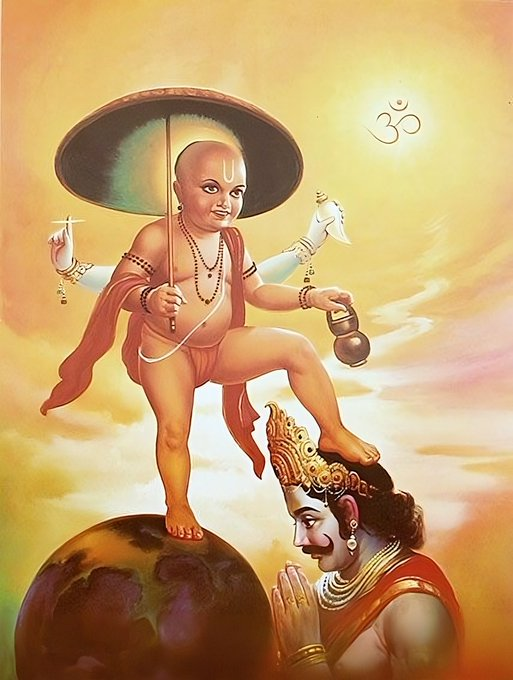
Mahabali is described in early Hindu texts as a benevolent and generous king. He ruled without discrimination, and his people were honest, healthy, and happy under his rule.[8] Mahabali also temporarily possessed the amrita (nectar of eternal life) obtained by the asuras.[9] The amrita allowed his subjects to bring him back to life after his death in one of the wars between suras (devas) and asuras.[10][9] Mahabali was, thus, immune from death. After many wars, the invincible Bali had conquered heaven and earth. The suras (devas) approached Vishnu to save them from complete obliteration. Vishnu refused to join the war, or kill the benevolent king Mahabali. To restore the natural order, he incarnated as the dwarf Brahmin avatar, Vamana.
While Mahabali was performing the Ashvamedha sacrifice to celebrate his victories and giving away gifts to everyone, Vamana approached him and requested “three steps of land”. Mahabali granted him this gift, despite warnings from his Guru Shukracharya, who had realized Vamana’s true identity. Vamana then metamorphosed into Vishnu’s colossal Trivikrama form, the first foot encompassing all of heaven in one step and the earth with the second foot. When rhetorically asked where he might take his promised third step, Mahabali accepted his fate and offered his own head.
Sage Ved Vyas
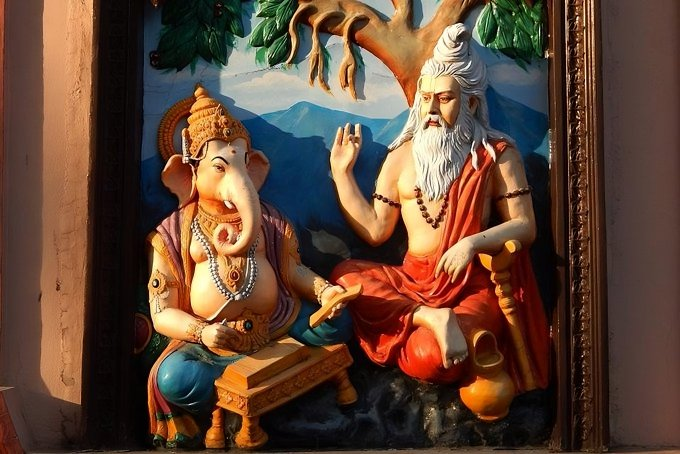
He is also regarded to be the compiler of the mantras of the Vedas into four texts, as well as the author of the eighteen Puranas and the Brahma Sutras. He is one of the immortals called the Chiranjivis, held by adherents to still be alive in the current age known as the Kali Yuga.
Vyasa’s birth name is Krishna Dvaipayana, which refers to his dark complexion (krishna) and his birthplace being on an island (dvaipayana). Vyasa may not have been a single person but a lineage of sages who were content to simply develop the ideas without claiming credit, as they were free from desire for the results of their work, and hence attributed the authorship to Vyasa. Vyasa was most likely only a title, anyone who composed a new Purana was known by the name Vyasa.

